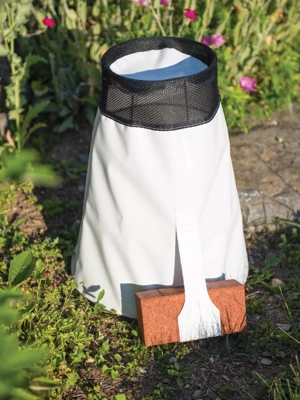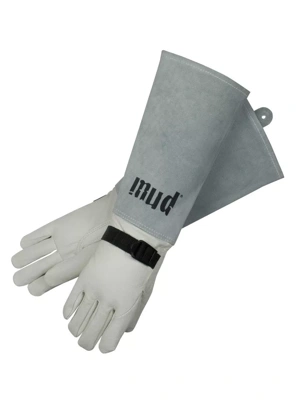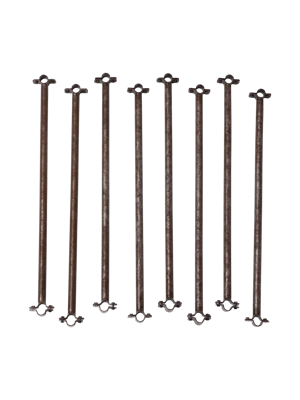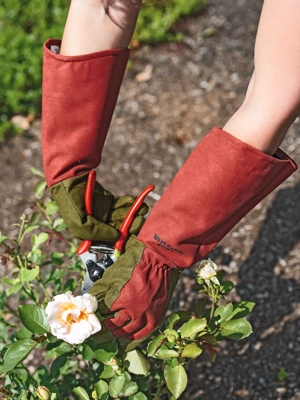How To Grow Roses

When it comes to fragrance, it's hard to beat a rose.
America's most popular flower is also one of the very oldest flowers in cultivation. There are over 2,000 different rose varieties to lure us with their history and fragrance. This is because the rose, like the orchid, cross-breeds readily—a trait exploited first by nature, and then by horticulturalists. Today, we can choose from old-fashioned favorites, as well as modern varieties that are the result of intensive breeding programs throughout the world. The rose is a flower with a rich past, and an exciting future.
Finding your way through the rose's large extended family can be both confusing and intimidating. Damasks, musks, gallicas, centifolias, hybrid perpetuals, Bourbons, hybrid teas, ramblers and climbers—even the most distinguished rosarians have a difficult time determining which rose is which.
Tracing the history of a particular rose can be a fascinating adventure, but it is hardly an exact science. The old roses have cross-bred so many times, and so many varieties have been lost to time, that it is often impossible to uncover the exact parentage. If you are one of the many who become possessed by roses, you may eventually find it important to know the difference between a gallica and a Bourbon. But until that point, our advice is not to worry about it. The important thing is to select a rose that you find beautiful, and that suits your garden.
Roses are usually grouped into one of two broad categories: old roses and modern roses. Old roses are those varieties discovered or developed prior to the introduction of the hybrid tea rose in 1867. But like everything else in the world of roses, when it comes to determining how a particular rose should be classified, it’s not always crystal clear.
It is generally agreed that "old roses" include species or wild roses; albas; Bourbons; moss roses; China roses; Noisettes; Portland roses; rugosa roses; Scotch roses; centifolias; hybrid pimpinellifolias; damasks; gallicas; hybrid perpetuals; tea roses; and musk roses. Those classified as modern rose varieties are hybrid teas; floribundas; polyanthas; grandifloras; miniatures and dwarfs; modern shrub and landscape roses; climbers and ramblers; and rugosa hybrids.
Why choose an old-fashioned rose over a modern hybrid? Many of the old rose varieties offer more fragrance, more complex and interesting blooms, greater disease resistance, easier care and more interesting forms. But modern roses can offer all-season blooms, and a much broader range of colors and flower forms. Some are also far more cold- hardy and disease-resistant than any of the old-fashioned varieties.
How to Select a Rose
There are thousands of beautiful roses, far more than any of us will ever have the opportunity to see, much less grow. When choosing a rose for your garden, there are five considerations that should make the selection process easier.
1. Growth habit

Though roses are usually planted for their flowers, it is important to know what the plant as well as the flowers will look like, in order to determine where it will fit in your garden.
Hybrid teas and floribundas usually grow no more than 2 to 3 feet high. Their form is coarse, and hardly very appealing, but they do have the ability to produce an abundance of flowers throughout the growing season. The hybrid tea has large, single blooms on long, stiff stems, whereas the floribunda has slightly smaller clusters of blooms on stems that are not as stiff.
Miniature roses have tiny flowers, and may be only 10 to 36 inches tall. Dwarf roses grow up to 2 feet high, and their flowers are produced in clusters. Shrub roses, including both the old-fashioned and the modern types, and ground-cover or landscape roses, are generally large and leafy.
Climbers and ramblers grow from 7 feet to 30 feet in length, and most of them benefit from some support. Standards are roses that are trained into a tree-like form with a single stem and a rounded bush or weeping display of flowers on top.
2. Hardiness
Northern gardeners need to know exactly what zone a rose is hardy to. Southern gardeners must also watch to see what zones are recommended for each particular variety, as some roses perform very poorly in hot and/or humid weather. Read the catalogs carefully and, if possible, purchase your roses from a local or regional grower. They will be able to advise you from experience about how a particular variety will perform in your area.
3. Bloom time
Many roses, especially the old-fashioned varieties, have just one flush of blooms per year. Will you be satisfied with a cloud of heavenly pink blossoms for three weeks in June, or do you need your rose to bloom all summer long? This consideration may narrow your choices very quickly.
4. Disease-resistance
Selecting a disease-resistant rose is the single most effective way to avoid problems and the need for chemicals. You might start by considering some of the old rose varieties, many of which have natural disease resistance. You can also look to many of the modern roses, which are now being bred for improved disease resistance. Hybrid teas are notoriously disease-prone, and seem to lure every insect pest from miles around. They can be difficult to grow without an arsenal of chemical dusts and sprays.
5. Stem length
This may seem like an odd consideration, but it's important if you are growing roses for cutting. The traditional florist rose is a hybrid tea, and it is the only type of rose that flowers on a long, stiff stem. All other roses have shorter, weaker stems, which gives them a more casual—some believe more beautiful—presence in a vase.
How To Care For Roses
Roses are rather particular, and you should be aware of the growing conditions and care necessary to keep them happy.
Choose The Right Location
Site: For most abundant blooms and greatest vigor, roses need to receive 6 to 8 hours of direct sunlight each day. In hot climates, they will appreciate receiving protection from the most intense afternoon sun. In cool climates, a fence or a warm south- or west-facing wall can add enough extra warmth to boost flower production and reduce winter damage.
Soils: Roses need good drainage and a rich, moisture-retentive soil, with a pH between 6.5 and 7. If your soil is heavy and wet, you may want to consider planting your roses in raised beds. Compost should be added to create a loose texture with a high organic content. For help correcting a pH imbalance, read Building Healthy Soil.
Watering
Roses require more water than most other landscape plantings, especially during the first year as the plant is getting its roots established. The best way to water your roses is with drip irrigation. It concentrates the water at the root zone where it is needed, and keeps the foliage dry to minimize disease problems. A good, thick layer of organic mulch will help conserve moisture, reduce weeds, and encourage healthy root growth. As the mulch breaks down, it will also add organic matter to the soil.
Fertilizing
Roses are heavy feeders, and will benefit from a steady supply of nitrogen, phosphorus and potassium. You can provide these nutrients with either liquid or granular fertilizers, at a ratio of approximately 5-8-5. In most cases, regular applications of compost, rotted manure, fish emulsion and seaweed extracts will provide roses with all the nutrients they need. These organic amendments also help to moderate pH imbalances and stimulate beneficial soil life. Other organic amendments favored by rose growers include greensand, black rock phosphate and alfalfa meal.
Pruning
Dead, weak and sickly stems can lead to disease problems. Pruning these away will increase air circulation to the center of the plant and minimize fungus problems. Pruning also stimulates new growth, and allows you to shape the plant in a pleasing manner. Spent flowers should be removed during the growing season to encourage reblooming. Use a scissor-action pruner for the cleanest cuts.
Winter protection
If possible, select rose varieties that are hardy for your growing zone; ones that can survive the winter with no special protection. In cold climates, hybrid teas and floribundas, as well as some of the smaller shrub roses, will benefit from a little extra insulation.
Once you have had several weeks of below-freezing temperatures, cover the base of the rose with 12 inches of soil or mulch, and then cover the canes with straw, leaves, pine boughs or even foam insulation. Climbing roses can be wrapped right on their supports, or you can lay them on the ground and cover the canes with straw or brush. In severely cold climates, hybrid teas are sometimes partially dug up, laid down onto the soil, and the entire plant is then covered with more soil or mulch.
Pests and Diseases Common in Roses
Prevention is the best way to avoid pest and disease problems.
Aphids, tiny insects that cluster on tender new growth, often plague roses, sucking sap and causing leaves to distort and yellow. Spider mites, too, can infest roses, leaving fine webbing and stippled leaves in their wake. Natural predators like ladybugs can aid in controlling aphid populations, while hosing down plants can dislodge spider mites. For Japanese beetle grubs, use beneficial nematodes or Milky Spore (Bacillus popilliae). Rose Rx is effective against scale, spidermites and aphids.
Additionally, fungal diseases such as black spot, powdery mildew, and rust commonly afflict roses, manifesting as discolored or spotted foliage. To combat these issues, it's crucial to maintain good garden hygiene by regularly removing fallen leaves and debris, as these can harbor pathogens. Additionally, planting roses in well-drained soil and providing adequate spacing for air circulation can help prevent fungal diseases.
For fungal diseases, fungicidal sprays or treatments formulated specifically for roses can be applied according to package instructions. Consistent monitoring and early intervention are key to preserving the health and beauty of roses in the garden. Start with disease-resistant varieties, keep plants in healthy condition (well fertilized and well watered), maintain good air circulation, keep foliage dry, and remove any diseased foliage or spent flowers.
For more information, see the Pest and Disease Finder.
Last updated: 02/13/2024
Print this Article:
Related items
Get the Dirt
Stay up to date on new articles and advice. Please fill out the information below.









